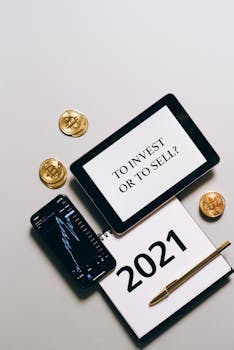Anúncios
Everyone remembers the first time an unexpected bill hit their account. Learning to handle these moments shapes more than budgets – it’s when many realize the true value of financial resilience.
Stability isn’t about luck or a flawless plan. It’s built by making mistakes, adjusting, and developing good habits through lived experience. This process quietly transforms how people think about risk, opportunity, and planning ahead.
Exploring the power of real experience helps demystify financial resilience. This article reveals practical rules, relatable examples, and step-by-step strategies you can use to grow stronger through each challenge and change.
Learning from Setbacks: Building Lifelong Financial Habits
Real setbacks force people to change course, triggering behaviors that feed lasting financial resilience. Each setback is a teaching moment, showing where routines break and how habits must shift to avoid repeating past errors.
Pivotal mistakes cause discomfort but plant the seeds for restructuring approaches. Recognizing these truths, anyone can begin implementing deliberate routines to foster stability, transforming each lesson into actions that shape daily life.
Spotting Triggers and Reactions
Financial resilience grows when people track what derails their budgets. Saying, “I always overspend after work stress,” turns a vague feeling into a specific trigger.
Once a trigger is known, journaling reactions (“Bought takeout instead of cooking because I felt tired”) clarifies opportunities to change. The key is observing cause and effect honestly, without blame.
Pinpointing patterns makes it realistic to swap impulsive choices for supportive routines. With consistency, tracking triggers becomes a reliable foundation for resilient decision-making.
Recovering and Responding After Mistakes
Having a go-to script for slip-ups speeds recovery. For example: “I went $100 over budget. Now I’ll adjust by eating at home until payday.” Naming the next step refocuses attention on action, not guilt.
The habit of responding rather than ruminating builds confidence over time. Each recovery cycle trains the mind to solve, not spiral, laying more bricks in the wall of financial resilience.
Encouraging yourself to repeat this process turns one-time fixes into lifelong approaches. Mistakes become a prompt for growth rather than a setback.
| Situation | Reactive Habit | Resilient Response | What to Do Next |
|---|---|---|---|
| Unexpected bill arrives | Panic and borrow | Pause, check emergency fund | Identify budget line to adjust this month |
| Lose part-time gig | Blame self, freeze spending | Assess savings, brainstorm income options | Apply for extra shifts within a week |
| Investment drops in value | Sell in fear | Review long-term plan, hold steady | Check asset mix is still aligned |
| Car repair needed | Delay payment, ignore cost | Price repairs, plan payment | Negotiate repair or adjust transport plans |
| Medical bill denied | Sigh, pay the charge | Call insurer, clarify appeal options | Document and track every call |
Turning Setbacks into Skill-Building Opportunities
Each loss or challenge prepares you to approach money challenges with increasing skill. The process starts by identifying what worked, what didn’t, and what to try next time.
Applying simple review questions after a setback—”What did I expect? What surprised me? What will I try next?”—helps turn every obstacle into a learning opportunity you can use going forward.
Using Review Checklists Effectively
Rather than replaying frustrations, jot down outcomes using a mini-checklist. This list should cover what you tried, how you felt, and what to adjust.
Consistent check-ins prevent blame cycles and spotlight progress. Checking these lists monthly builds financial resilience with evidence of growth, even if progress feels slow.
- Write down one thing that went wrong and what you expected to happen. This narrows the gap between plans and reality and helps you adjust routines.
- Track what actions you took right after the setback. This exposes knee-jerk reactions so you can replace them with smarter responses in the future.
- Note your emotional cues. Stress, frustration, or calmness offer clues to manage future reactions. Use these notes to design self-care rules that keep you on track.
- Revisit your action list in a week. What changed? Highlight any improvements, no matter how small, to build momentum for further change.
- Update your checklist template regularly to include new obstacles. Customizing this tool ensures each experience teaches you exactly what you need next.
Repeating this process after each event, your confidence grows naturally as setbacks turn into repeatable skill-building sessions.
Applying Lessons Without Over-Correcting
Bouncing between extremes—cutting all fun or never budgeting—creates burnout. Instead, moderate adjustments anchor financial resilience: “I’ll pause dining out three weeks, then review.” Give yourself boundaries that allow course corrections without harshness.
If you recognize yourself going too far, reset by choosing one small step back toward balance. Aim to learn rather than punish yourself.
- Downshift spending for a set time only, so deprivation doesn’t sap motivation long term. This teaches flexible control, not rigid rules.
- Celebrate when adjustments maintain your core routines, like groceries or self-care. Protecting these confirms growth, not just restriction.
- Set timers for reviews and resets. Mark your calendar to reassess, so recalibration becomes a normal part of the cycle.
- Forgive setbacks that stem from new experiences. First attempts teach your boundaries and stress points—be your own supporter, not critic.
- Identify when perfection slips into procrastination. Acknowledge progress, then pick one area to nudge tomorrow for continuous growth.
Moderation, review, and self-compassion all combine to foster practical, day-to-day financial resilience you can trust for the future.
Translating Emotions into Practical Financial Decisions
Surprise, frustration, or excitement all nudge people toward specific choices. Financial resilience deepens when emotions are acknowledged directly, rather than ignored, so feelings become data—not distractions—in decision-making.
Actively labeling emotions, such as “I’m anxious about my fluctuating hours,” builds self-awareness. Use this insight to develop scripts and plans for managing next steps rationally rather than impulsively.
Using Emotional Scripts to Guide Choices
Start by scripting a neutral response. Instead of, “I’ll never get this right,” reframe with, “This is hard, but I have bounced back from setbacks before.” Neutral language reduces emotional spikes and supports clear action.
Next, tie this script to a plan: “I’ll set aside $10 weekly, even if I wish it was more.” Actions, not ideals, transform emotions into practical steps that contribute to ongoing financial resilience.
Practicing these scripts aloud normalizes self-supportive behavior, especially during tough choices or negotiations. The more you try it, the more natural it feels.
Decoding Emotional Spending Patterns
Notice when purchases correlate with certain moods, such as tiredness, reward, or boredom. Logging these connections makes spending less arbitrary and more intentional.
Replace old routines with options that don’t drain your wallet: call a friend instead of online shopping, or take a short walk. Each successful swap rewires your habits and strengthens financial resilience.
Over time, the ritual of checking-in on emotions before spending makes money choices proactive—aligned with your goals, not just feelings of the moment.
Turning Unexpected Events into Financial Flexibility
True financial resilience means staying upright through life’s sudden swerves: job changes, surprise expenses, or windfalls. Designing rules that absorb shocks keeps you adaptable and prepared for anything.
Setting up systems before chaos strikes gives you levers to pull under stress. Practice these routines during small surprises, so they’re ready when the stakes are higher.
Creating Emergency Action Plans
Write down three steps for any surprise, such as: 1. Pause spending, 2. Review finances, 3. Brainstorm solutions. Post this list where you will see it when stress hits.
Include specific wording:“If I lose hours, I’ll immediately update my pay estimate and notify roommates before adjusting routines.” These rules set a roadmap, reducing panic when disruption arrives.
Test these mini-plans by practicing during minor setbacks. Each test cycle deepens your sense of financial resilience.
Practicing Adaptability with Mini-Drills
Create mock scenarios every month. Pretend a $200 bill appears: walk through your response, from initial stress to final adjustment.
Compare outcomes to your plan and adjust scripts as needed. Seeking feedback from a trusted person accelerates learning and reveals blind spots.
Building adaptability through drill-work ensures flexibility becomes routine—ready for the moments you really need it.
Redesigning Everyday Habits for Long-Term Stability
Financial resilience resets when daily routines prioritize progress. Update habits intentionally to support goals, not just minimize mistakes, and choose structures that can adjust as life evolves.
Break habits into actions you can measure and review. For instance, “Set alerts for balances every Friday afternoon” is a concrete rule supporting steady awareness.
Integrating Financial Reviews into Weekly Routines
Place short money check-ins on your calendar each week. Review spending, savings, and upcoming bills in 10 minutes to spot trends early.
Speak aloud one thing you handled well, and one you’d like to recalibrate. This self-audit keeps growth steady while affirming your progress.
Fine-tune the process monthly. Stay curious about what works instead of defaulting to old habits that once failed.
Automating Decisions Without Losing Control
Automate transfers for key savings goals as soon as paychecks clear, but check monthly that deposits still match priorities. Automation supports consistency, but only if periodically checked.
Create rules for “pause and review.” If income or expenses shift, temporarily halt automated processes until you realign the budget. Flexibility adds another layer to your financial resilience.
Lean on automation for routine targets, and lean in with manual review for changes. This blend combines stability with true responsiveness.
Making Resilient Choices in the Face of Uncertainty
Each unpredictable event is an opportunity to blend learning, emotional awareness, and planning into a single action. The goal is to normalize uncertainty so each choice feels less daunting and more deliberate.
Thinking two steps ahead—”If this, then that”—breaks paralysis and replaces it with a flexible, ready strategy. Practicing scenario-thinking over time makes resilient decisions second nature.
Anticipating Challenges with Scenario Planning
List out potential financial disruptions quarterly. Assign each a response, such as, “If rent rises, ask landlord about payment options first.” Script your words to avoid freeze-up.
Update your list after each real event, noting what you missed or handled well. Over time, this routine refines your instincts and boosts certainty, regardless of external unpredictability.
Scenario planning isn’t about eliminating fear, but about reducing surprise. The more you practice, the more your financial resilience grows organically.
Embracing the Learning Curve Without Self-Judgment
Adopting a student mindset—honoring small wins and forgiving stumbles—fuels long-term financial resilience. Remind yourself, “This is practice, not a pass-or-fail test.”
Encourage curiosity after setbacks. Instead of asking, “Why did I fail?” try, “What did I learn that will help next time?” This simple shift softens the blow and promotes improvement.
With enough practice, each challenge becomes another notch of experience, moving you closer to a flexible, future-proof relationship with money.
Crafting a Clear Path Forward with Tested Strategies
Building financial resilience through real experience is both an art and a system. Notice your reactions, design routines, and keep refining them as life throws new surprises your way.
Stay focused on skill-building over perfection. Celebrate each cycle from mistake to adjustment to improved habit, knowing every experience adds to your personal roadmap.
Financial resilience isn’t a one-time milestone, but a tested process. Live, learn, review, and reset—then watch your stability and confidence deepen, no matter what tomorrow brings.



